
If there’s one thing I love as much as playing with batteries, it’s charging them up from the sun. And when it comes to my electric bikes, which are kind of outdoor toys by definition, being able to charge in the field is a pretty darn neat trick for extending range when camping or just spending all day in the great outdoors. I recently had the chance to test out for just that purpose, and I can tell you that this is a really cool piece of gear to bring on your next e-bike trip.
For starters, this is a folding solar panel, meaning it is made up of multiple units of smaller solar cells all wired together so it can fold back up into a small package.
It comes in a convenient little carry case that also includes pockets to store the various cables that extend the utility of the solar charger.
Not only do you have both a DC barrel connector and a three-pin connector, but you also get alligator clips for more DIY-ish charging purposes and the tried-and-true MC4 connectors that you’ll find on many other solar panels.
You can see all the contents from the kit in the images below. There’s also a typical 48V e-bike battery there for scale, though I can tell you the bag is around 13x8x3.5 inches when packed down (33x20x9 cm).

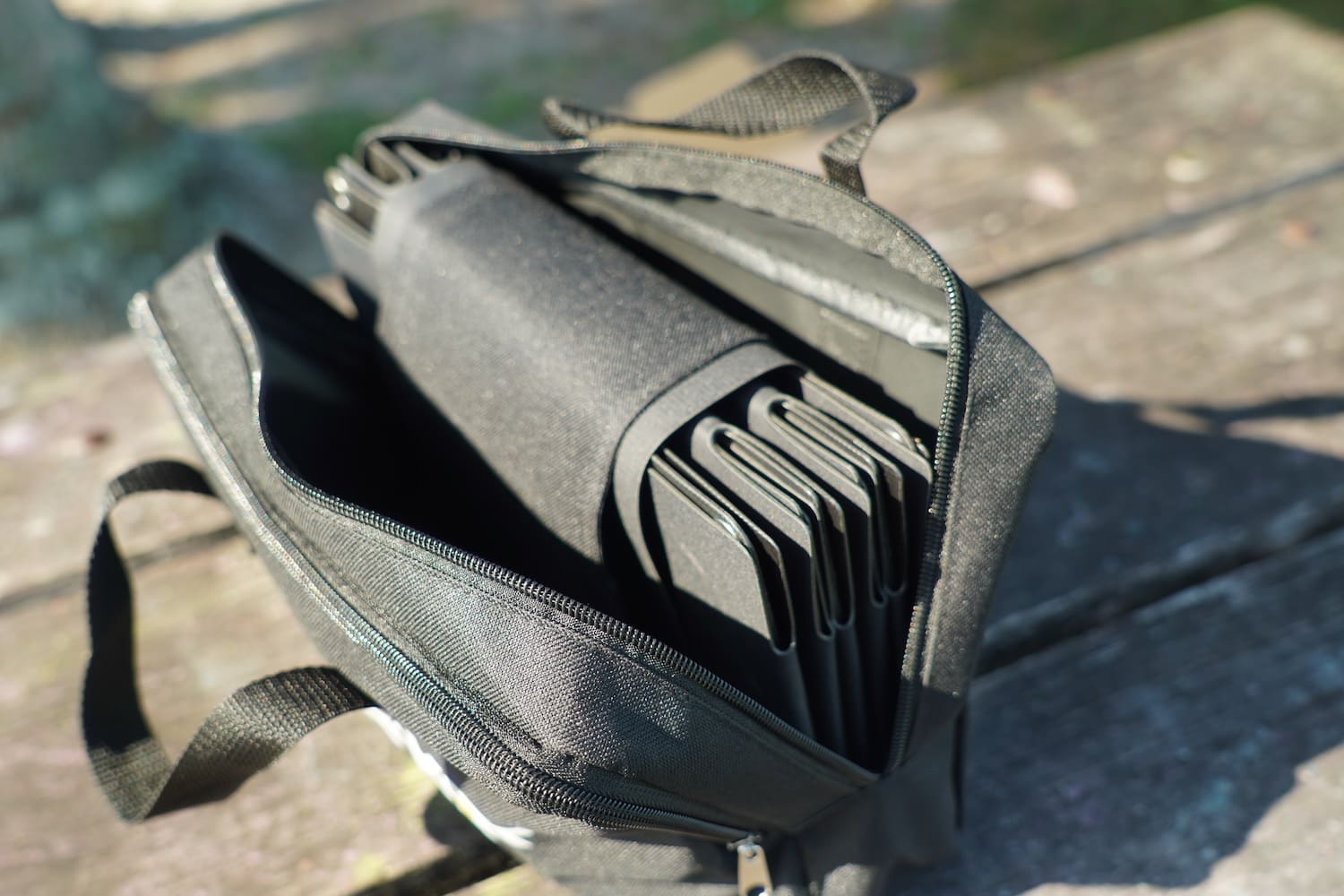
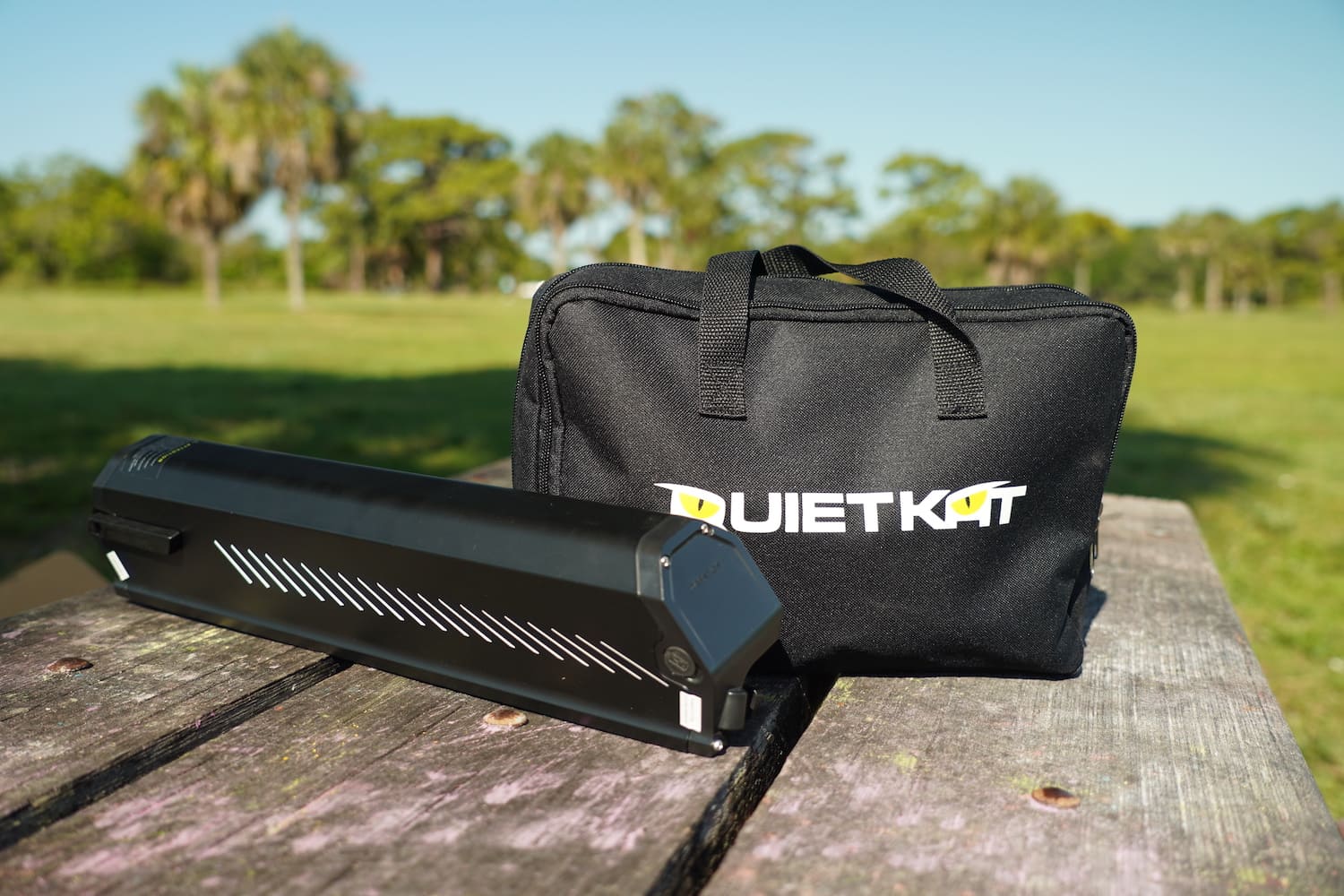
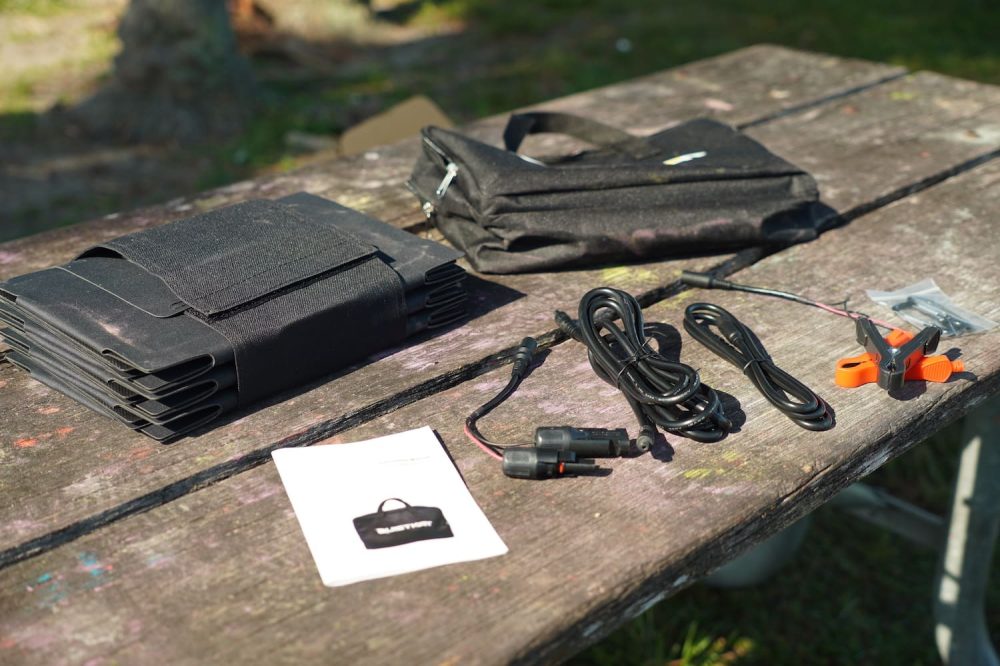
It’s actually a surprisingly small and packable little kit when it’s all folded up. In fact, the first time I pulled the solar panel out, I couldn’t believe how big it was compared to how small the bag was.
The panel is rated for 150W, which is actually more power than most typical e-bike chargers that come with a base model e-bike. For a 48V battery, you’ll usually get a 48V 2A charger from the manufacturer, which equates to around 100W. So this charger will actually be a slight boost in charging performance and speed compared to your wall charger, unless your manufacturer was kind enough to spend the extra few bucks and give you a 3A or 4A charger with your e-bike (most aren’t).
This version of the charger is the 48V option, but they also make a 52V version as well.
Technically this solar charger is intended to be used for . But I’ll let you in on a little secret: I don’t have a QuietKat e-bike, so I just used it on several of my e-bikes from other brands. As long as they use either the incredibly common DC barrel connector or the less common small three-pin connector (both of which come in the QuietKat solar charger kit), it will work for your e-bike battery –assuming you chose the correct 48V or 52V version to match your e-bike battery.
And since I don’t have an awesomely rugged Jeep-branded QuietKat e-bike, I couldn’t take a cool photo like their marketing images below, but you get the point. It’s a big panel. Also it can stand up like a science fair trifold board, which is pretty cool, though largely inefficient unless you’re charging at 8:00 or 18:00 when the sun is near the horizon. For any other time, you’ll want the panel either laying flat (for midday sun) or propped up on something (like your e-bike) to angle it toward the sun for best results. But the panel also has two tie-down holes with grommets in the top corners, plus it includes two carabiners, so you can also hang it on something if you want.
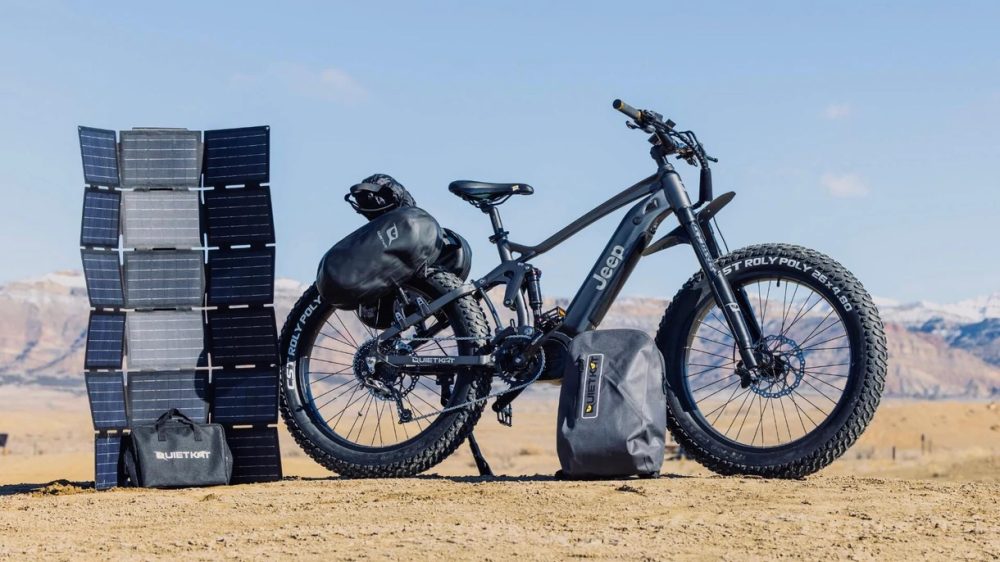
The charger itself has three ports on the backside, including two USB-A ports and a DC barrel connector.
The USB-A ports will be useful for charging up your phone, tablet, GoPro or other action camera, walkie-talkie, flashlight, heated socks, Tamagotchi, or whatever else you happen to bring into the field.
The DC barrel connector is where all the heavier duty charging things plug in, i.e., your e-bike battery.
Using the included connector cable, you simply pop that sucker in the panel on one side and your e-bike battery on the other. For a typical 48V 10.4Ah e-bike battery, you’re looking at somewhere around four hours or so for a full charge in good sunlight. If you’re just stopping for lunch for an hour, even getting 25-30% charge back into your battery is a definite possibility.
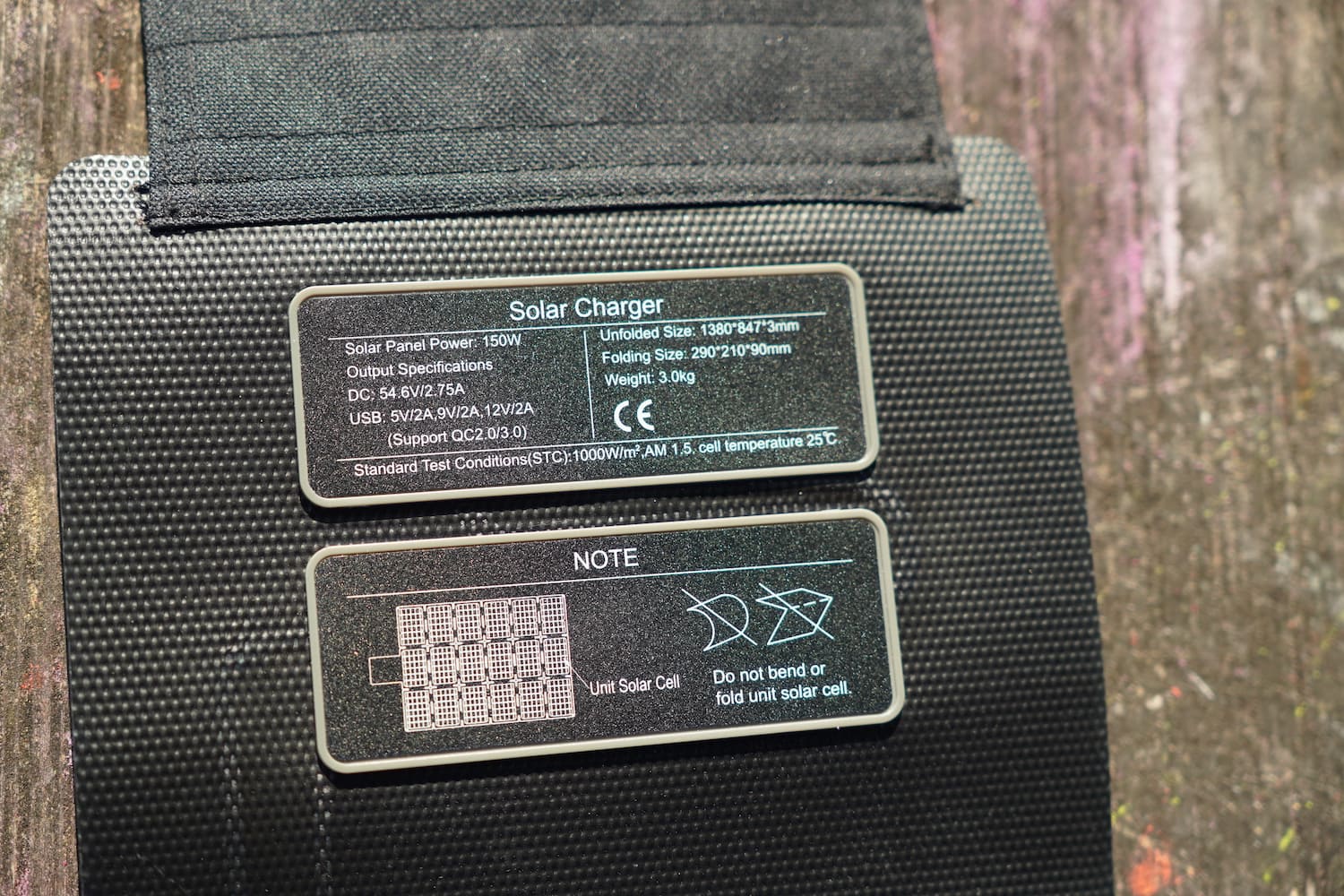
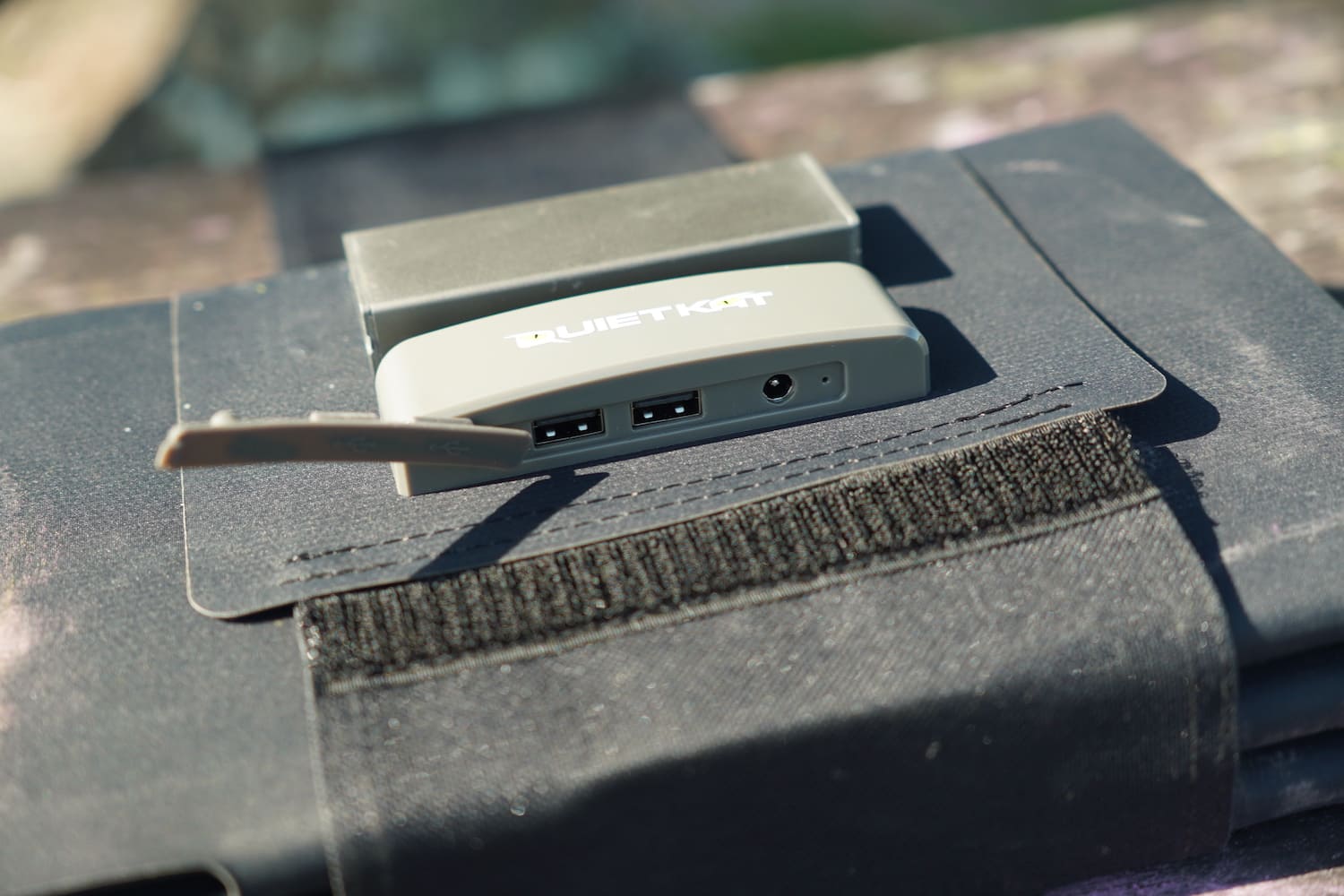
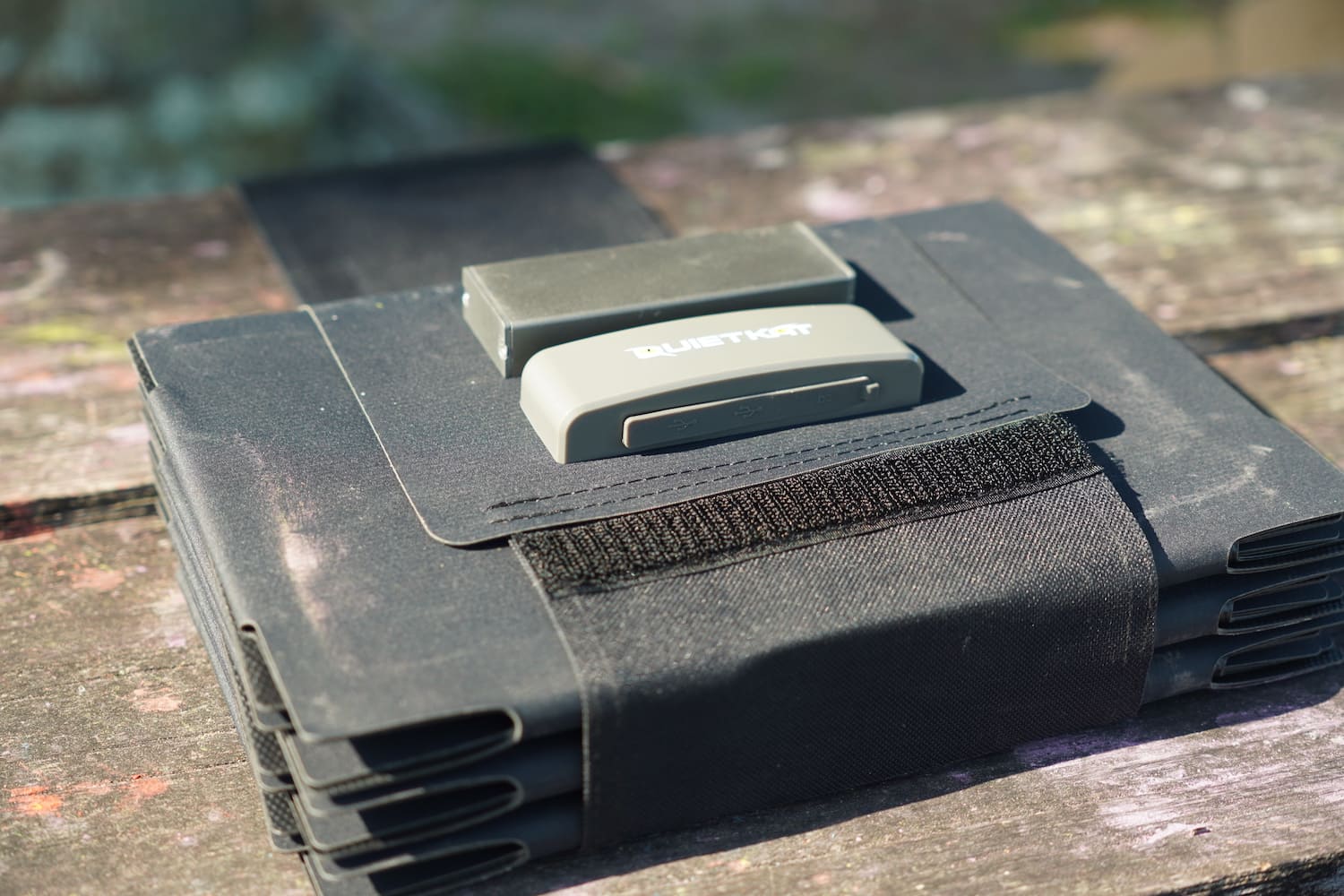
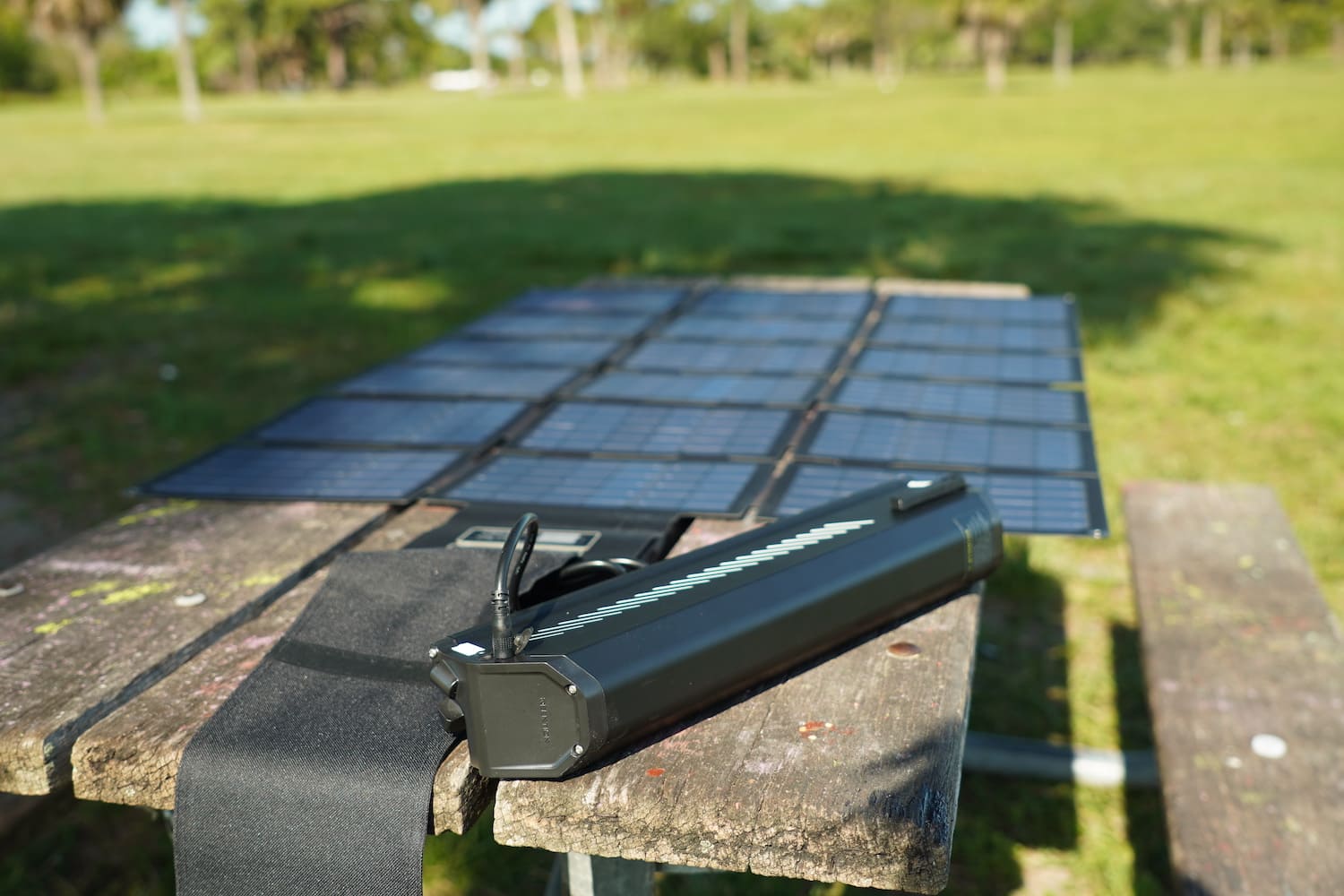
The whole package is slickly designed and easy to use. You just pull it out, unfold it, and plug in. That’s it. Easy peasy, lemon squeezy.
The only hard thing is that it’s a bit rough on your wallet, . In terms of dollars per watt, that will make some solar enthusiasts want to cry. But then again, the point isn’t to make a cheap solar panel, it’s to create an all-in-one e-bike charging solution.
It’s a huge convenience factor that you don’t need any inverters and can simply plug the panel directly into your e-biker, not to mention the convenience of the tiny size of the packed panel.
I don’t know if you’ve seen other 150W solar panels in real life before, but they’re usually around the surface area of a surf board. The fact that you can get 150W of solar power folded into something the size of a box of tissues (again, Americans will use anything to avoid the metric system) is a pretty cool advancement in solar powered e-bike charging.
So while this won’t be a toy for the cash-strapped, it is a really cool way to charge your e-bike off-grid, and pretty much the only one I know of that’s a complete all-in-one solution.
And that’s pretty cool in my opinion.
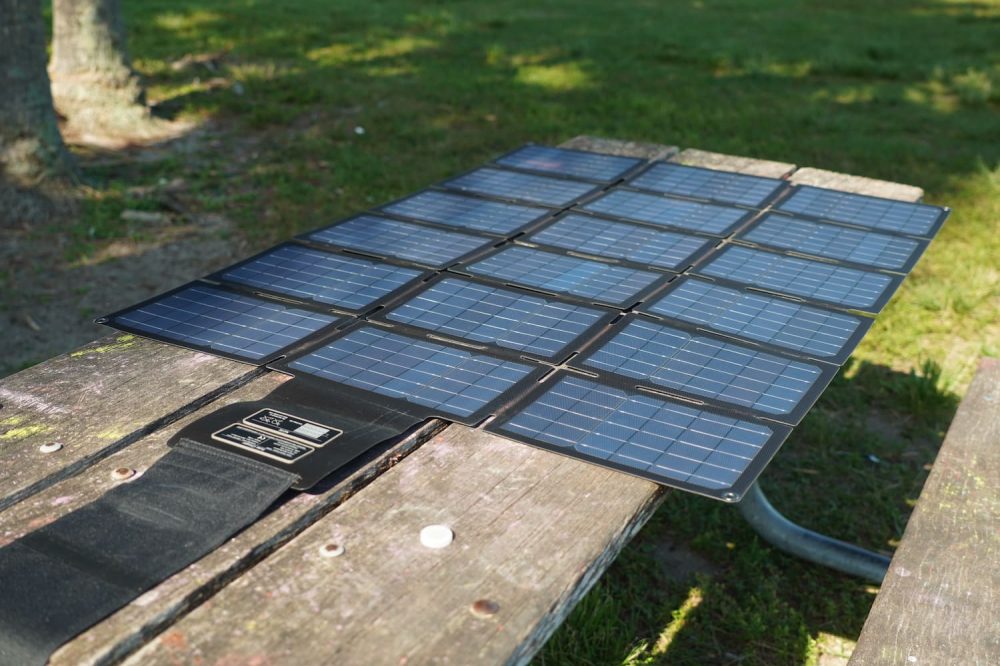
Subscribe to Electrek on YouTube for exclusive videos and subscribe to the podcast.
Author: Micah Toll
Source: Electrek



